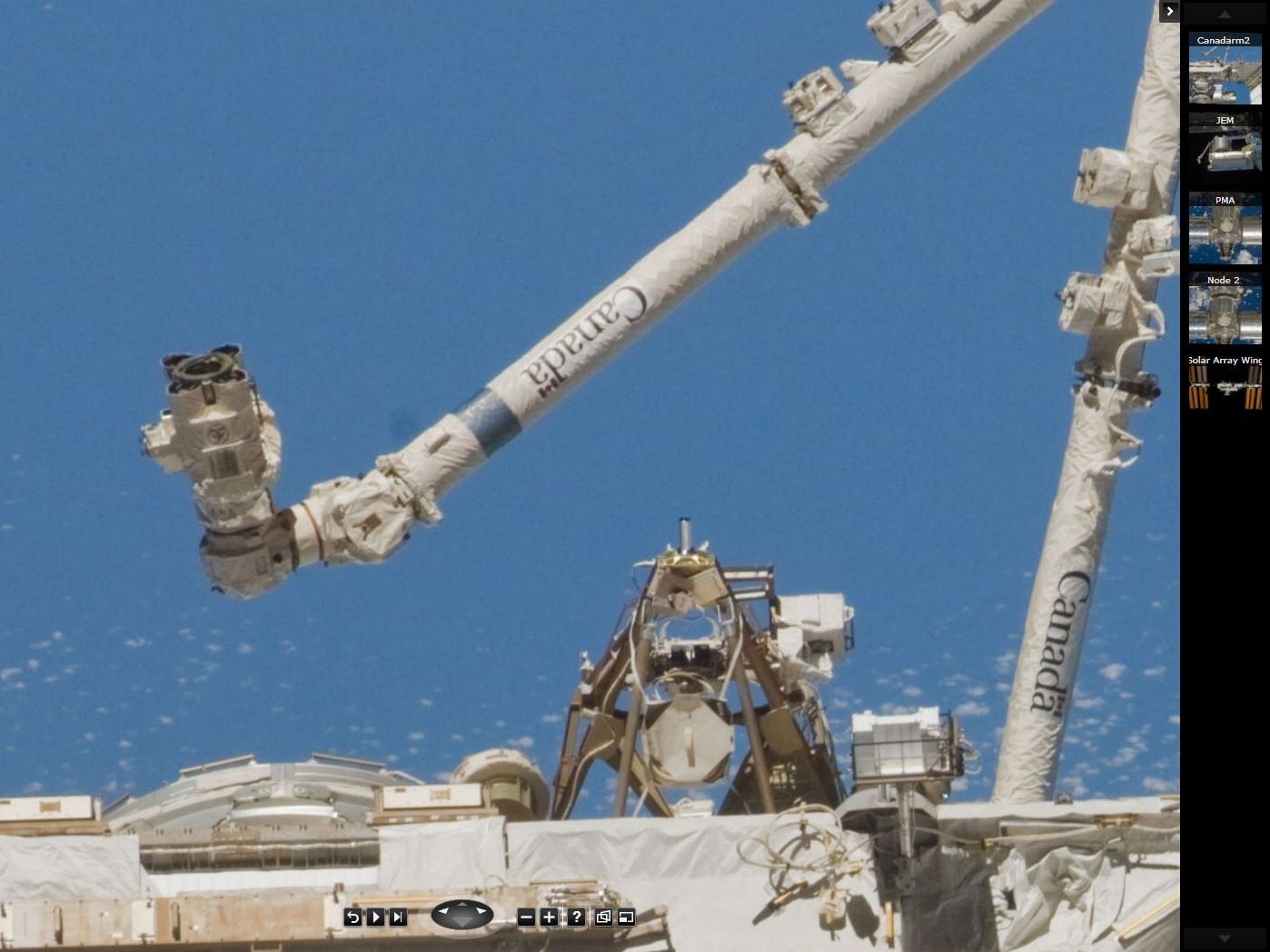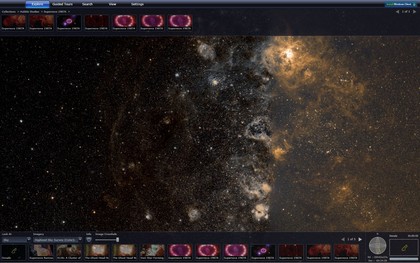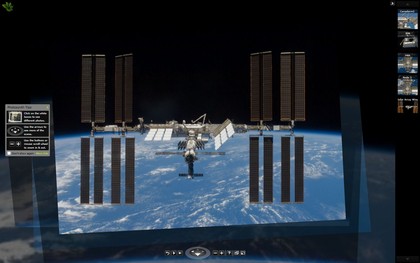
This is a sponsored article in association with Microsoft.
Space is an amazing place, but it's also amazingly dangerous: if your rocket doesn't fall to bits on the way up you have to dodge space junk, keep an eye out for aliens and cross your fingers that you won't burn up on re-entry.
Wouldn't it be great if you could get all the brain-expanding benefits of space exploration without the danger, expense or fear of alien abduction?
It turns out that all you need to become an armchair astronaut is a decent internet connection. The extraordinary Worldwide Telescope takes terabytes of images and data from Earth- and space-based telescopes and stitches it all together, enabling you to explore the universe in eye-popping style and with extraordinary amounts of detail.
You can pan across the sky and zoom in on stars, nebulae and planets, and every object comes with a massive amount of related information that's just a mouse click away.

EXPLORE: The Worldwide Telescope combines photography and expert guides to bring you guided tours of the known universe
In addition to your solo adventures Worldwide Telescope also offers guided tours of the cosmos. Harvard astronomer Alyssa Goodman can show you how dust turns into stars and planets, while University of Chicago cosmologist Mike Gladders travels back billions of years to show gravity bending the light from far-flung galaxies.
Sign up for breaking news, reviews, opinion, top tech deals, and more.
You can head off on your own tangents at any time and pick up from where you left off, and you can even create your own space tours for others to enjoy.
The secret to the Worldwide Telescope's success is Silverlight, Microsoft's impressive system for delivering online media.
The same Deep Zoom technology that enables you to see details of Jimi Hendrix's guitars works even better with distant stars, providing ever-increasing levels of zoom without stuttering, buffering or indistinct images.
In a nice touch, Silverlight also means you can bring Worldwide Telescope to Bing Maps, enabling you to see the sky from anywhere in the world. Simply find a location in Maps, click on the Map Apps button and add Worldwide Telescope; this gives you a telescope icon you can drop onto the map to show visible constellations, planets and Hubble photographs.

MAP IT: Worldwide Telescope now works with Bing Maps, so you can see the cosmos from any vantage point you choose
Worldwide Telescope isn't the only superb Silverlight space application: NASA's built something amazing too. If you check out its Photosynths page you can explore 3D models of the International Space Station.
You can float around the exterior, viewing the station from any angle you like, or you can explore its innards: there are dedicated Photosynths of the Quest airlock, the Destiny laboratory from the US, the Kibo Japanese laboratory and the nodes that link the different sections together.

SPACE OUT: NASA used Microsoft's Photosynth to create 3D models of the International Space Station that you can explore online
If you're wondering what a Photosynth is, it's another Microsoft technology built into Silverlight.
By taking huge numbers of photographs and stitching them together, Photosynth can create immersive 3D models from static images - and it's not just limited to space stations, either. You'll find all kids of "synths" at the Photosynth web site, and you can even create your own.
Once you've explored the inside of the International Space Station and navigated the visible universe, you're almost an astronaut; all you need is a bit of experience dodging asteroids and blasting the odd flying saucer.
For that, point your browser to Silverlight Space Rocks, a nifty version of an arcade favourite. It isn't NASA-approved, but it's a lot of fun.
The TechRadar hive mind. The Megazord. The Voltron. When our powers combine, we become 'TECHRADAR STAFF'. You'll usually see this author name when the entire team has collaborated on a project or an article, whether that's a run-down ranking of our favorite Marvel films, or a round-up of all the coolest things we've collectively seen at annual tech shows like CES and MWC. We are one.